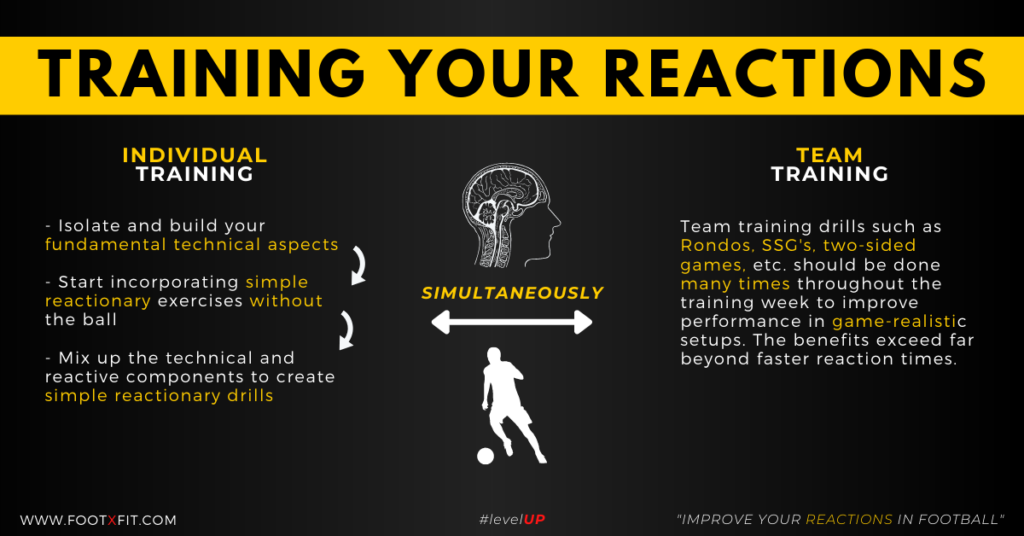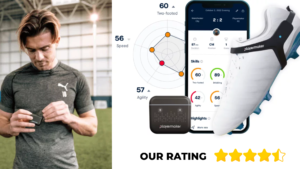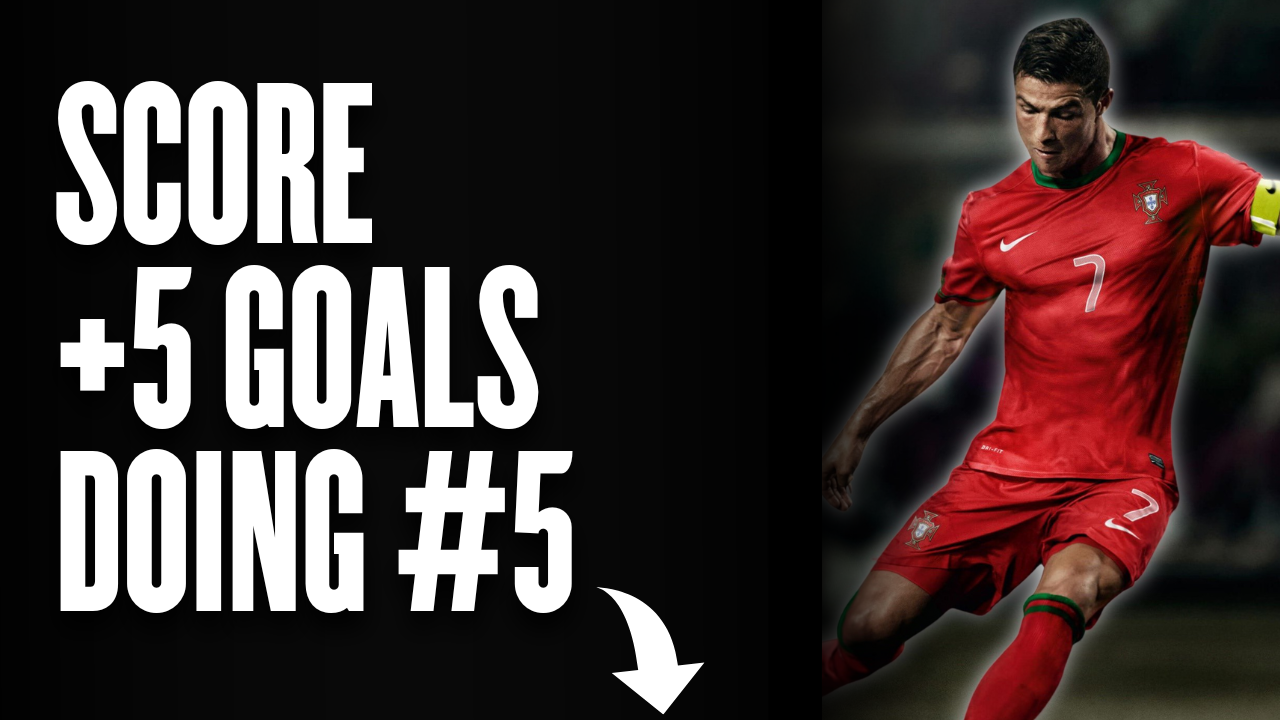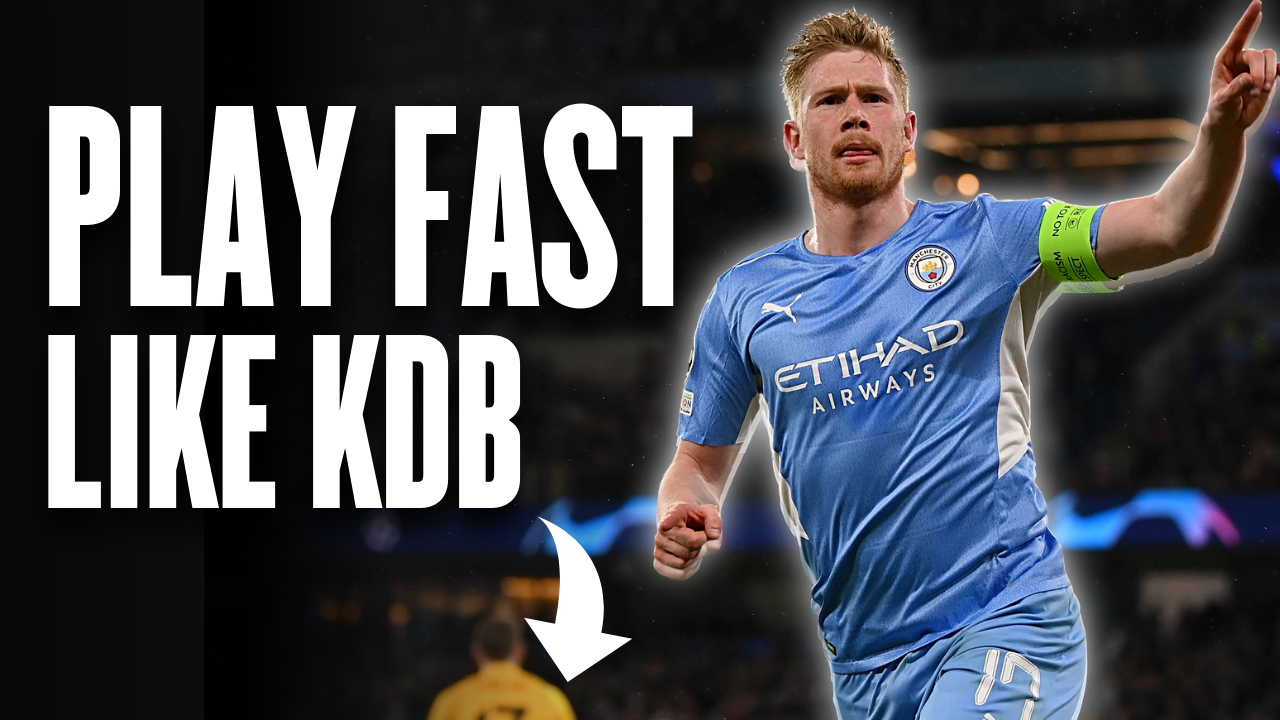
In today’s fast-paced game of football, your reactions play a major role in performance. The execution speed of each action gets faster and faster the higher you climb the ladder of football. Speed is a primary factor that is present in every instance of the game. However, to get faster (in any action) you need to capture information, process it, and take action upon the info faster. This is something many like to call perception-action coupling.
What Are Reactions In Football & How Do I Improve Them As A Football Player?
The reactionary ability is a skill that combines the cognitive and physical ability of the player. It is a footballer’s ability to react to a certain cue or stimulus with a certain speed that is appropriate to the play.
There are two types of reactions in football; simple and complex reactions. To improve your reactionary ability as a player you will need to progressively work your way up to more complex drills and situations. Build your technical, physical, and cognitive base, and slowly transfer yourself to more complex situations to challenge your reactionary ability to a whole new level. Here are some of the steps you can take;
- Progressively improve the fundamental technical aspects of your performance and position
- Nail down the correct movement patterns in the basic movements of the game (sprinting, change of direction, jumping, decelerating, etc.)
- Incorporate simple reactionary drills at an early age
- Cultivate game habits to raise your awareness (head scans)
- Progressively start combining physical and technical skills with reactionary drills
- Move from simple reactionary drills to more complex ones
- Nothing beats the real game – team training drills and 90-minute games are the best forms of training to improve your reactionary ability
- Surround yourself with challenging players – the higher the level the faster the speed of play, and therefore, the greater the requirements to react faster
The Importance Of Fast Reactions In Football
Football has changed a lot over the last decades. It is much faster and reactionary in comparison to the old-fashioned style of play. Every centimeter, millisecond, step, etc. counts. One step late and you’ve lost the battle. One millisecond late and you’ve lost the chance to score the game-winning goal.
Those marginal wins are what you, and any other footballer, should be after. Of course, your reactionary ability isn’t the end all be all answer to performance, but it definitely is a really important piece of the puzzle.
Football is a game that is really dependent on speed. The first phase of any action that involves speed is the reactionary phase. Studies come to show that most sprint efforts that happen in-game are within the 5-10m mark – a small distance that doesn’t even allow you to reach your maximum speed.
So, no matter if you’re the fastest or the slowest player on your team, you can greatly benefit from training your reactionary ability. Go after those marginal gains and you will experience the benefits in your game. Start training your reactions in football.
By improving your reactionary ability, especially in complex situations, you also improve your…
- Linear speed
- Change of direction
- Heading ability
- Technical skill
- Speed of play
- Decision-making
- Tactical behavior
- Technical behavior in tight spaces
- Spacial awareness
The Areas You Need To Develop (Reactionary Process)
At the beginning of this article, we mentioned the term “perception-action coupling”. What this really means is that the reactionary process isn’t dependent on one system of your body, but moreover, it is a neuromuscular activity that requires both the brain and the body for execution.
Perception involves actions like capturing information from your environment, sending it to your brain for processing, and then commanding the right muscles to contract and produce movement. This basically is your cognitive ability.
Action is all about physical work. After your nervous system creates a command it sends it to your muscles for movement production. This physical reaction can be a physical skill such as a sprint, a change of direction, etc. or it might even involve technical aspects such as a pass, a dribble, etc.
According to VM Zatsiorsky, there are 5 phases during the reactionary process.

*As an affiliate, I'm earning from qualifying purchases without any extra charges being placed on you.
- The appearance of a stimulus or cue to the sensory organs (ears, eyes, skin)
- Stimulation of the CNS (Central Nervous System)
- Creation of a stimulus that is sent to the brain through the nervous system and creation of a command
- The command is sent to the appropriate muscles through the CNS
- Stimulation of the muscles and appropriate movement creation
In other, more simple words, this process can be broken down into 3 actual phases.
- Awareness/Perceive
- Thought processing
- Physical action

Now that we’ve got the process analyzed, we can deliberately set the objectives, which are no other than improving all of those 3 phases.
The Two Training Styles
Another thing we need to discuss has to do with the types of reactionary training that exist. Not every reactionary action and drill is the same. Just as we mentioned at the beginning of the post there are simple and complex reactions.
Simple reactions are the ones that involve specific movements in reaction to specific cues or stimuli, about which the player is fully aware. This type of reaction includes drills such as the visual reaction to a color (perception) which is followed by a pass (action). This type of training is quite repetitive in nature and emphasizes technical consistency under more pressure and game-realistic actions in comparison to simple technical or physical drills and exercises. That’s a great way to build your base, progress simple drills, and make refinements in periods where it is needed.
On the other hand, we have complex reactions. The core characteristic of this type is decision-making. The player has to react to different cues/stimuli and finally produce a movement of his/her own choice. The environment is usually uncontrolled/chaotic and there’s a handful of possible decisions to choose from. Complex reactionary ability is what really sets skilled and less experienced players apart. Your ability to react fast and effectively in a chaotic environment, such as the one of a 90-minute game, is what can level up your performance and raise you to the top.
Both types of reactions can and should be used in training to enhance the player’s ability to react. The earlier the better. Progressive overload should be applied with the aim of building the base and working your way up to more complex stuff. Both training tools can be also utilized at the same time.
Tools & Exercises To Improve Reactions In Football
Visual Cues & Stimuli
One of the sensory organs that receive information from the environment that we play in is the eyes. Your vision is a really important asset of your performance and the sooner you realize it the better. The implementation of visual cues and stimuli usually leads us to the creation of a simple reactionary drill where movements and actions are known and remain the same throughout the whole drill. Exercises that include visual cues and stimuli are also great for developing awareness and scanning ability.
Here are some examples of visual cues and stimuli you can use in your football training as a player or coach:
- Commands with the arms (direction)
- Colored items (i.e. cones)
- Arrows showing a direction
- Numbers
- Football (i.e. the coach throws the ball in the air and players react when he/she catches it)
The SwitchedOn training app is a great app that can help you set up drills with visual cues and stimuli. More info at the end of the article.
Verbal Cues & Stimuli
Another sensory organ football players use to receive information in the first phase of the reactionary process is the ears. Your ears can receive information even if you’re not fully aware of the environment (visually). This can be both good and bad. Don’t trust your ears 100% of the time when you’re in-game. Many times, especially at the higher level, smart players use their voices to manipulate their opponents giving away “fake information” to mislead them.
“A good communicator speaks well and listens better.“
In a training setting, however, you might as well use verbal cues and stimuli to further increase the cognitive demands of a drill and make it a bit more realistic. Again, this would typically lead us to the creation of another simple reactionary exercise which would also help us use our ears more. I know this sounds a little bit crazy, but a huge amount of players struggle with communication, especially when they are receivers of information. A good communicator speaks well and listens better.

*As an affiliate, I'm earning from qualifying purchases without any extra charges being placed on you.
Here are some examples of verbal cues and stimuli you can use in your football training as a player or coach:
- Directions
- Colors
- Numbers
- Game-realistic cues (i.e. “man-on”, “pass”)
- Claps
- Whistle blows
Other Areas Of Development
Apart from the tools we mentioned above, you will definitely need to develop your base as a player. In other words, you need to constantly work on the fundamental areas of your performance. We’re mainly talking about technical skills, tactical efficiency, and strength & conditioning.
All of these game areas will help you react faster AND better. Your reaction is just a number. An important number. However, quality is key. A better technical level will allow you to take action with quality. A higher level of tactical efficiency will enable you to recognize and read the game better and faster, which will in turn help you minimize your reaction times. Strength and conditioning also play a vital part in your performance. If you’re well-conditioned you’ll be able to react and execute faster but also sustain that high level of reactionary speed over the course of a 90-minute game. Something that is critical and can easily set you apart from the crowd.
Complex Reactions
In the first two paragraphs, we covered a lot of information that can primarily help you create simple reactionary exercises. But what about complex ones?
Complex reactionary drills are the ones that are usually done in a chaotic (team) environment where the player’s decision-making is constantly challenged. This form of training is as close as you can get to realistic game-action. No matter the level or age of the individual player, complex reactionary ability should be trained, primarily in a team setup. These drills can be deemed as the most effective ones, not only for reactionary purposes but overall for performance.
Here are some complex reactionary drills that many football teams and individuals use:
- Rondos
- SSG (Small-Sided-Games)
- Possession games
- Using overloads to challenge one team a step further
- Using limitations (i.e. touch, space) that will force you to perceive, process, and act faster
- Two-sided games
As you can realize, complex drills are as game-specific as they can get. There is literally NO better way to improve your reactions in football than to actually react to game-specific cues and stimuli in a game setup. That is the reason why so many coaches, even top-level ones, use drills such as the ones mentioned here. The benefits exceed far beyond the scope of reactionary training. It is in your control to recognize the benefits of these exercises and really put all your focus into them.
Progressively Overloading Reactionary Exercises
The principle of progressive overload must be applied to every area of development. Having said that, there is a major difference here. Although we would usually leave complexity for the last phases of a training program, this is not the case with reactions in football.
What you need to do is make sure you build the fundamentals of your game, which can be summed up into your technical skills, your tactical efficiency, and your strength and conditioning. Then, you can take the fundamentals and mix them up with simple reactionary components such as visual or verbal cues and stimuli. This will increase the level of any technical drill you’re already doing and incorporate that cognitive component which is critical for game setups.
At the same time, however, team training (even individual training, if possible) should consist of multiple “complex” drills that are going to challenge the overall performance of the individual. We basically want you to work in a chaotic setup and make some refinements in your technical level combined with your cognitive skills.

The Sum Up
Reactions in football play a major role in today’s football. Every action has gotten faster, both on a physical and cognitive level. It is your job to take care of this area of performance, too.
With the tools that we have available today, it is easier than ever to create and plan out drills and exercises that can challenge you even on a cognitive level. Build your technical base, incorporate cognitive components to your drills, and always give your best when you’re in a team setup.
Lastly, we would also like to mention an application that we truly believe in. The SwitchedOn Training App. The SwitchedOn Training App is a Perceptual-Cognitive-Motor (PCM) training app. It works by providing randomized cues in the form of colors, numbers, and arrows, that users associate with different actions or movements. The app is FREE and available in your app store.
You might as well check out their YouTube channel (that is linked below) to find a variety of different drills you can use to challenge your cognitive and technical skills to a whole new level.




